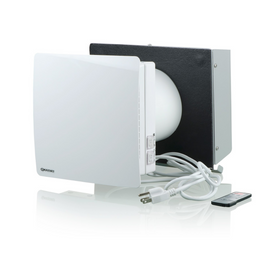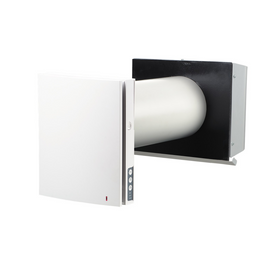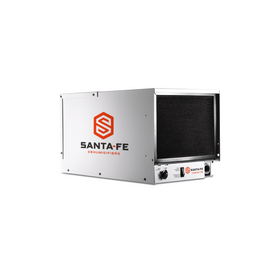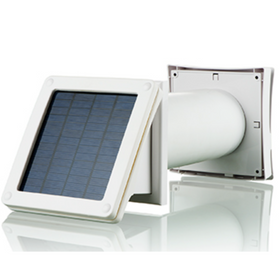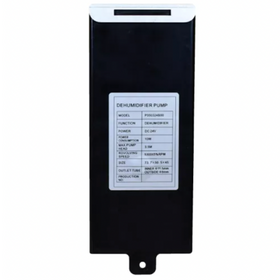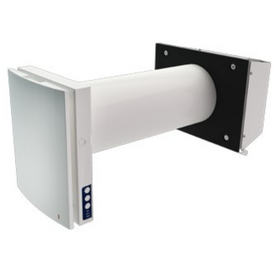
What Is an HRV or ERV System?
Last Updated: Feb 20, 2025If your home is reasonably airtight, it may need an energy-efficient ventilation system to supply fresh air. These systems, known as Heat Recovery Ventilators (HRV) and Energy Recovery Ventilators (ERV), save energy and improve indoor air quality. In this guide, we will touch on the maintenance, installation, and operation of your HRV or ERV system.
Table of Contents
- Do You Need an HRV or ERV System?
- Does My Renovated Home Need an HRV or ERV?
- How Is Home Airtightness Measured?
- Why Is Air Ventilation Important?
- Should You Choose an HRV or ERV?
- How Do HRVs Work During The Winter Season?
- How Do HRVs Work During The Summer Season?
- How Do ERVs Work During The Winter Season?
- How Do ERVs Work During The Summer Season?
- How Do You Measure HRV or ERV Efficiency?
- Are HRV or ERV Loud?
- Installation
- HRV and ERV - Care, Maintenance, and Operation
- Do HRV and ERV Work if the Power Goes Out?
- Summary
Do You Need an HRV or ERV System?
For new construction, yes. A new home that meets current building codes or high-efficiency standards like Passive House should be quite airtight and needs an air ventilation system.
If you have an older house that is drafty now, it depends on how airtight you plan to make it through air sealing renovations. If your home improvement project makes the house much more airtight, you might make the house airtight enough to need a ventilation system. For example, you are wrapping the house in a new layer of insulation and air barrier or having closed-cell spray foam applied around the whole exterior. Either way, that’s good news because you will save boatloads of energy (and money!) and improve the air in your home.
Does My Renovated Home Need an HRV or ERV?
The best way to know whether your renovated house needs a ventilation system is to have a home energy assessment that includes a blower door test before and after your renovations. In a blower-door test, a Certified Energy Advisor temporarily installs a large fan in an exterior door. The fan is used to blow air out of the house to test how airtight the house is.
The rule of Thumb: if the house has less than 3 air changes per hour (ACH), it is reasonably airtight and might need a ventilation system.

How Is Home Airtightness Measured?
Airtightness is measured in Air Changes per Hour (ACH). This indicates how many times per hour the volume of air in your house exchanges with the outside air through existing holes and cracks in the building envelope. The lower the ACH, the more airtight the house is, and therefore the more energy efficient. A drafty home could test out at ten or more ACH, while a super-tight home or Passive House could be down to less than 1.5 or even 0.6 ACH.
Why Is Air Ventilation Important?
We all need fresh air to breathe. The emissions from activities inside the house need to be removed, so they don’t build up to damaging concentrations. These include carbon dioxide from breathing and water vapor resulting from breathing, showers, and cooking. If your house is not getting enough air exchange, one sign can be water condensing and dripping down windowpanes when it’s cold out.
Venting emissions with a simple exhaust fan, like a bathroom fan or range hood fan, certainly helps. But whole-house ventilation systems like an HRV or ERV have significant advantages. They cover the whole house, and they recover the thermal energy in the exhaust air. The thermal energy is then used to preheat the incoming fresh air in winter or precool it in summer, saving you money on your energy bills.

Should You Choose an HRV or ERV?
Heat Recovery Ventilators and Energy Recovery Ventilators have different advantages depending on your climate and how you operate your house. The critical difference is that an ERV will make your home more humid in winter and less humid in summer than an HRV. This is not often an advantage in winter because one reason to ventilate in winter is to get rid of excess humidity.
How Do HRVs Work During The Winter Season?
HRV recovers heat energy from the exhaust and uses it to preheat the fresh air, saving you energy. Heat is transferred across a heat exchange core, so your fresh air is not contaminated by your exhaust air.
How Do HRVs Work During The Summer Season?
If you have air conditioning, you can use an HRV to precool the fresh air coming into your house. If it’s not too hot out and you don’t have or aren’t using air conditioning, you can also open windows for fresh air and shut off the HRV.
How Do ERVs Work During The Winter Season?
ERV preheats the fresh air with energy from the exhaust air and transfers moisture from the exhaust air to the dry fresh air coming in, making the fresh air supply more humid.
How Do ERVs Work During The Summer Season?
If you are using air conditioning, the ERV precools your fresh air supply and transfers moisture out of the humid fresh air into the exhaust air, making your fresh air supply to the house less humid.
The key difference is that an ERV will make your home more humid in winter, and less humid in summer, compared with an HRV. In winter, this is not often an advantage, because one of the reasons to ventilate in winter is to get rid of excess humidity.
Where an ERV shines is in summer in a hot, humid climate. On hot summer days, the ERV will remove some humidity from the outside air before distributing it through your house. This makes your home less humid and more comfortable. This advantage only applies if you are using air conditioning. If not, then the indoor and outdoor humidity will be relatively similar anyway, and no humidity transfer will happen.
An ERV can also help in a frigid and dry winter climate because it can help humidify a house that might otherwise be too dry. If you would otherwise need a humidifier in your home in winter, an ERV could be advantageous.
In the end, the difference between an HRV and an ERV is not that large. In a reasonably airtight house, either one will be a significant improvement over not having ventilation. An HRV is a good default choice, with an ERV being helpful in those climates with seasons of extreme humidity – extremely cold and dry or hot and humid.
How Do You Measure HRV or ERV Efficiency?
HRVs and ERVs are rated by their thermal efficiency. In the past, HRV and ERV efficiencies were rated using Sensible Recovery Efficiency (SRE), developed by the Home Ventilating Institute (HVI). HVI's has a new, more accurate rating system, Adjusted Sensible Recovery Efficiency (ASRE) and Adjusted Total Recovery Efficiency (ATRE). Both models analyze the supply stream (adjust by heat loss or heat gain), air leakage, and airflow mass imbalance between two airstreams. ASRE is utilized for heating season modeling, while ATRE is used for cooling season modeling. The ratings range from 55% and up; higher saves you more.
HRV or ERV Controls
Look for units with multiple or variable speeds or smarter controls based on humidity, so they can ramp up and down as needed.
Are HRV or ERV Loud?
There are two fans inside an HRV or ERV, and they are going to run much of the time, so you want a quiet system. Unfortunately, it’s hard to find sound ratings for these units - HVI doesn’t give sound ratings for HRVs because it depends on where and how they are installed. Please talk with a professional installer about which ones they’ve found are quieter and how to keep the whole ventilation system quiet. It would be best to consider where the unit would be placed, duct design, sound isolation, and large enough air diffusers. You could even ask to listen to one in operation.
HRV or ERV Air filtering options
Consider what kinds of advanced air filtration are available, such as HEPA filters that remove smaller particles if you are especially sensitive to dust or pollen in the air. All HRVs and ERVs come with a basic air filter, so they all decrease the number of dust particles in your home.
Installation
The correct ductwork design and installation of a whole-home heat recovery ventilation system can be tricky and involve many details. We recommend working with an experienced home ventilation professional on this.
HRV and ERV - Care, Maintenance, and Operation
All HRVs and ERVs have an air filter inside them that needs to be cleaned regularly, every two months. Depending on your system, you may be able to do this job yourself. Consult the manual of your unit for regular care instructions.
HRV and ERV Winter operation (cold climate)
Run the ventilation system continuously at a low speed and ramp it up when there is extra moisture in the house, such as when showering or cooking. This is where multiple speed settings and easy-to-use controls are helpful.
HRV and ERV Spring / Summer / Fall (moderate climate)
During warmer seasons, you could turn off the ventilation system and open some windows. This would allow for fresh air to enter the home; however, it would not be filtered.
HRV and ERV Summer (hot climate)
If you are running air conditioning, it’s best to keep the windows closed and use the ventilation system.
Do HRV and ERV Work if the Power Goes Out?
An HRV or ERV requires a continuous supply of electricity. If the power is out, it will stop working unless you have a backup power supply. This is no big deal, but if your house is airtight, you may need to open a few windows a bit to let in fresh air for the power outage duration. This will lose some heat in winter but may be needed if the air is getting stuffy or water is condensing on windows.
Summary
If your house is reasonably airtight (less than three air changes per hour), an HRV or ERV system is a good investment in energy savings and air quality. Choose a quiet model with high efficiency. It doesn’t matter a lot, whether it’s an HRV or an ERV. An HRV is a reasonable choice unless the outdoor climate makes your house get uncomfortably dry in winter or humid in summer.
Wayne Groszko
Wayne Groszko is a consultant, researcher, and teacher in Energy Sustainability with 13 years of experience. He has taught at Dalhousie University and the Nova Scotia Community College, in the Faculties of Engineering, Environmental Science, and Energy Sustainability Engineering Technology. Wayne is also President of the Community Energy Cooperative of New Brunswick, and has worked as Renewable Energy Coordinator with the Ecology Action Centre in Nova Scotia. He holds a B.Sc. (Hon.) from the University of Calgary, and a Ph.D. from Dalhousie University.

